in the distance the launch pad for a spaceshuttle
this is really rocket science
one of the earlier Saturn rockets, the S-IV
a Mercury Atlas rocket
you can see the spaceshuttle upfront
The Kennedy Space Center at Cape Canaveral
To put a satellite in a stable
orbit you have to lift it at least 200 km and give it a forward speed
of a whopping 7.8 km/s.
Making use of the rotational speed of the Earth helps, at the equator you get .5 km/s for free if
you launch to the east.
NASA's
Kennedy Space Center KSC at
Cape Canaveral sits at the right position, being relatively
close to the equator and with thousands of km of empty ocean to the east if something goes wrong.
Spaceshuttle Atlantis performed its last manned flight in July 2011. Since then US astronauts fly to and from
the International Space Station aboard the reliable Russian operated
Soyuz system.
The next manned flight from KSC will
be in 2018 or later by a commercial carrier, probably
SpaceX.
We visited the KSC complex in April 1992.
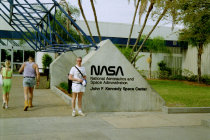
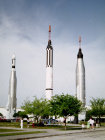
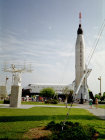
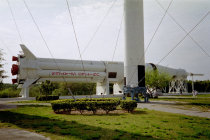
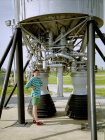
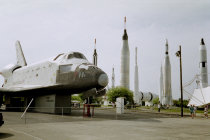
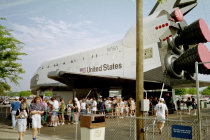
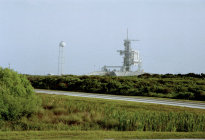





at the entrance of KSC




a Mercury Redstone flanked by two Atlas rockets









the rocket garden with a spaceshuttle in the foreground













































